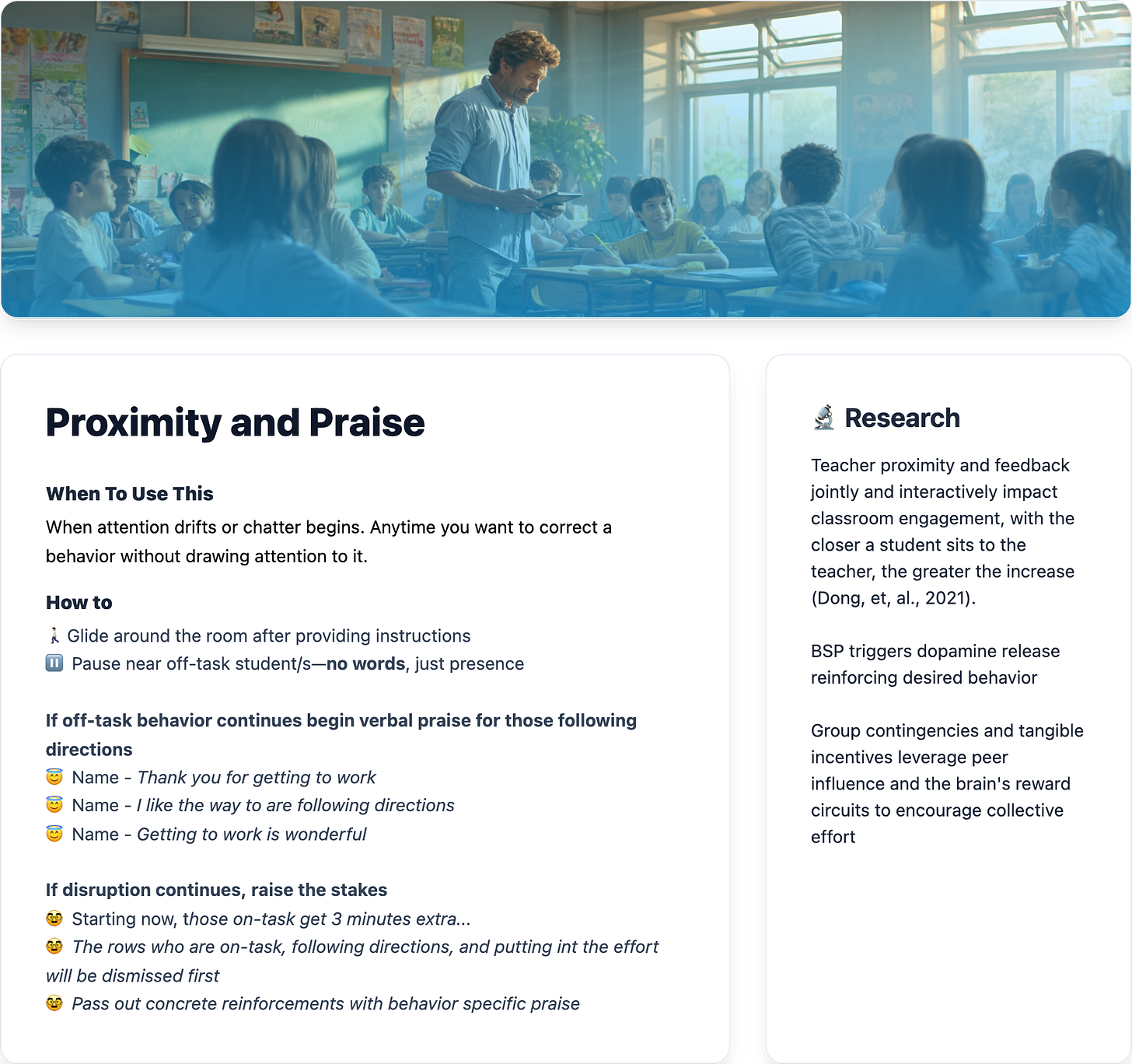✨Part 1: How Teacher–Student Relationships Define Your Classroom Management Style
Why connection, not control, is the real foundation of effective classroom management
The Classroom Dilemma Every Teacher Faces
A student walks in with their head down and ignores your greeting. Later, you ask them to begin the assignment, and again they don’t respond.
Are they being disrespectful… or signaling a deeper problem? This kind of moment happens in every classroom. What’s often overlooked is that student behavior isn’t just about rules and routines; it's also about the quality of teacher–student relationships. The way you respond is directly tied to your classroom management style and the relationships you've built.
The Overlooked Link Between Relationships and Classroom Management Styles
Research confirms that positive teacher–student relationships are the foundation of a strong learning environment (Xie & Derakhshan, 2021).
But not every classroom management style creates the trust and safety students need to fully engage and learn.
Classroom management is more than rules and routines. It also means investing in relationships. The way you connect with students, establish safety, and bring energy to learning defines your style, and ultimately shapes your classroom culture.
🔹 The Five Core Classroom Management Styles
(adapted from Stueber, 2020 review of classroom management literature, Bethel University)
There are five core classroom management styles. Supportive and Fair teachers balance warmth with structure, building trust and belonging. Permissive and Friendly teachers create warmth but risk losing boundaries. Dictatorial and Authoritarian teachers gain order through fear or pressure, which undermines trust. Distant and Detached teachers focus on content over connection, leaving students disengaged. Finally, Inconsistent and Unfair teachers shift expectations unpredictably, creating instability that fuels anxiety.
Every teacher leans on more than one style, but knowing your dominant tendencies helps you recognize the messages you’re sending, and the brain states your students experience in response.
Style 1: Supportive and Fair
The Positive Impact
A supportive and fair teacher creates a calm and purposeful classroom where students feel safe and motivated to learn. This style balances warmth with clear expectations, leading to better student performance, a stronger sense of belonging, and improved well-being. By using behavior-specific praise and steady responses, these teachers build a culture where fairness and trust are the shared norms.
The Fix
This style is about maintenance, not correction. The primary challenge is to stay balanced. A supportive teacher must remain vigilant, ensuring that warmth does not slide into a lack of boundaries and that structure does not become too rigid. The fix is to consistently pair compassion with clear, non-negotiable routines.
Strategy Connection: Proximity and Praise
Proximity and Praise is a natural extension of the Supportive and Fair style. By moving closer to students who are drifting off-task and praising those who are engaged, teachers redirect the class without confrontation. The combination of presence and positive reinforcement communicates expectations clearly while keeping the tone respectful. When used consistently, Proximity and Praise builds trust and reduces disruptions. Students learn that attention follows effort and that the teacher notices positive behavior more often than mistakes.
🧠 Brain Connection
Supportive classrooms reduce uncertainty and lower emotional threat. This frees the brain to operate in what the BrainZones model calls the Green Zone, a state where students feel safe, collaborative, and ready to learn.
Research shows that strong teacher–student relationships support attention, emotional regulation, and academic achievement (Xie & Derakhshan, 2021). By creating this sense of safety and fairness, Supportive and Fair teachers help keep the prefrontal cortex, clear and available for learning.
Style 2: Permissive and Friendly
The Impact on Student Well-being
Permissive and friendly teachers are often easy to like. Warmth builds strong teacher–student relationships and can encourage cooperation in the short term.
But when warmth is not paired with clear expectations and consistent routines, problems grow. Quiet and vulnerable students may slip through the cracks, while disruptive ones take over. Over time, engagement drops, behavior challenges increase, and academic growth slows.
Another common trap is showing favorites, even unintentionally. Small gestures that seem harmless to a teacher can be obvious to students, creating feelings of unfairness that erode trust.
The Fix
The solution is not less warmth. The solution is warmth with boundaries. By pairing kindness with structure, teachers keep the climate positive while still protecting learning time.
Strategy Connection: Smooth Moves: Transition Power-Ups
Smooth Moves: Transition Power-Ups are simple routines that flip transitions from chaos to calm. A music cue signals the shift, a visible timer gives structure, or a student-led chant makes the moment fun. Predictable signals help students move quickly and keep the learning momentum strong.
When these routines are used consistently, students feel both safe and energized. The classroom climate stays warm, but learning time is protected. For a more in-depth understanding of balancing permissive and friendly with structures and routines, check out The Carrot and the Stick.
🧠 Brain Connection
When warmth isn't paired with clear expectations, students can feel uncertain, activating the Orange Zone in the BrainZones model, where the brain is on high alert. If disruptive behaviors go unchecked, students may feel less safe. The right balance of warmth and structure restores trust and helps the class remain in the Green Zone, where collaboration and learning thrive.
Closing Thoughts
Being supportive and empathetic builds trust and resilience, but students also need clear structure to feel safe and stay engaged. Supportive and Fair teachers find this balance most effectively, while Permissive and Friendly classrooms show that warmth without boundaries can leave students feeling uncertain or overlooked.
The big takeaway: classroom management is not just about control. It is about connection plus consistency. When those two pieces work together, students thrive both academically and socially.
Next, we will look at three additional styles: Dictatorial and Authoritarian, Distant and Detached, and Inconsistent and Inflexible and consider how each affects teacher–student relationships and classroom culture. In the meantime, you may want to revisit Rules That Stick: The Brain-Based Way to End Repeat Reminders for another classroom management strategy you can use right away.
👋 Thanks for Reading
Thanks for reading Shift Happens! Subscribe free to get the next post in this series and other classroom-ready strategies straight to your inbox.
Rooting for your classroom success






